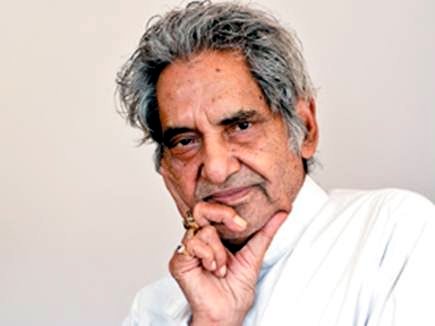
Gopaldas Neeraj - Who Captured Popular Imagination With His Poetry and Lyrics
[Kavishala Daily] Remembering legendary poet and lyricist Gopaldas Neeraj on his Birth Anniversary. Apart from his contribution to Hindi poetry, Gopaldas Neeraj had written songs for Hindi films and was considered Dev Anand’s favourite. We Loved his literature, his writings in impeccable Urdu and Hindi Found solace in his beautiful poetry Always cherished the songs he wrote be it ‘Phoolon ka shabab’, ‘Ae bhai’ or ‘He Maine Kasam Li’ His works will stay with us forever.
The poet who prophesied the future (and our present) in these words was none other than Gopaldas ‘Neeraj’. In these challenging times, we shall be served well to remember this romantic revolutionary who leaves behind a powerful legacy of Hindustani poetry, lyrical film songs and unmatched philosophical insights to deal with our anxieties about the ‘self’ and ‘other’.
Jab tak mandir aur masjid hai
Mushkil mein insaan rahega
‘Neeraj’ to kal yahan na hoga
Uska geet-vidhan rahega
Gopaldas Neeraj (popularly known as Neeraj; 4 January 1925 – 19 July 2018) was an Indian poet and author of Hindi literature. He was also a poet of Hindi Kavi sammelan. He was born in the village of Puravali, near Mahewa in Etawah district in Uttar Pradesh, India on 4 January 1925. He wrote under the pen name "Neeraj" Adversities pursued him from his early childhood as he lost his father when he was only six. Financial difficulties compelled Neeraj to leave his mother and siblings and stay with his paternal aunt in Etah. Despite all the odds, in 1942 Neeraj completed his high school with first division, only to give up further education, return to his family in Etawah and look for some gainful employment. The poet in him was restless but he had to work as a typist for hire at Etawah court premises and at a cinema hall paan shop. He also did wall painting for advertisement of ayurvedic medicines. Pulling a rickshaw and diving into the Yamuna river to retrieve coins thrown by devotees were not out of bounds.
Many others would have their spirits crushed but these adversities only emboldened the man. Diverse life experiences and living through the emotional rollercoaster, moulded the poet within him. At the age of fourteen, Neeraj performed at his first public event. In 1942 he participated in a kavi sammelan under the pseudonym Bhaavuk (emotional); his distinct rendition not only brought him instant praise from the other luminaries, but also a cash prize of five rupees which the great poet cherished all his life, more than any other award or recognition. He wrote under the pen name of Bhaavuk Etaavi for some time until he took the other and his most famous pseudonym
The quest for a stable job took Neeraj to Delhi where he worked as a typist in the government’s supply department at a monthly salary of sixty seven rupees. He used to send more than half of his salary home and always took a very late lunch in order to skip dinner and save some money; sadly, it led to serious liver ailment. Neeraj participated in a kavi sammelan in Delhi in 1944, where the eminent Urdu poet, Hafeez Jalandhari was so impressed by his rendition that he offered Neeraj work at the government’s publicity division for a salary of one hundred and twenty rupees. Neeraj was supposed to promote government policies through his writing and poetry recitation, and this work took him to different parts of India. He visited Calcutta in the aftermath of the 1943 Bengal Famine and the sight of humans fighting with stray dogs for some leftover food deeply affected him. It is here that he composed his famous poem, Vidrohi
Main Vidrohi Hoon, Jag Mein Vidroh Karane Aayaa Hoon
In British India, it was unthinkable for someone hired by the government to give a clarion call for revolution and go unpunished. Neeraj had to leave the government job and move to Kanpur, where he worked as a clerk and as a stenographer. He completed his Bachelors and then Master of Arts in 1953. For the next two years Neeraj, the job seeker, remained outside the productive workforce though Neeraj, the poet, had the most busy and productive time participating in different kavi sammelans with full force. In 1956 Neeraj finally found full time job most suited for his vocation, teaching Hindi at Dharm Samaj College in Aligarh, the city which became his ‘home’ forever
Neeraj is one of those rare Hindi poets who were equally well-versed in writing Urdu verses or Ghazals. He believed that any literature or poetry is alive not because of its wonderful arrangements or word play but because common people can easily r
